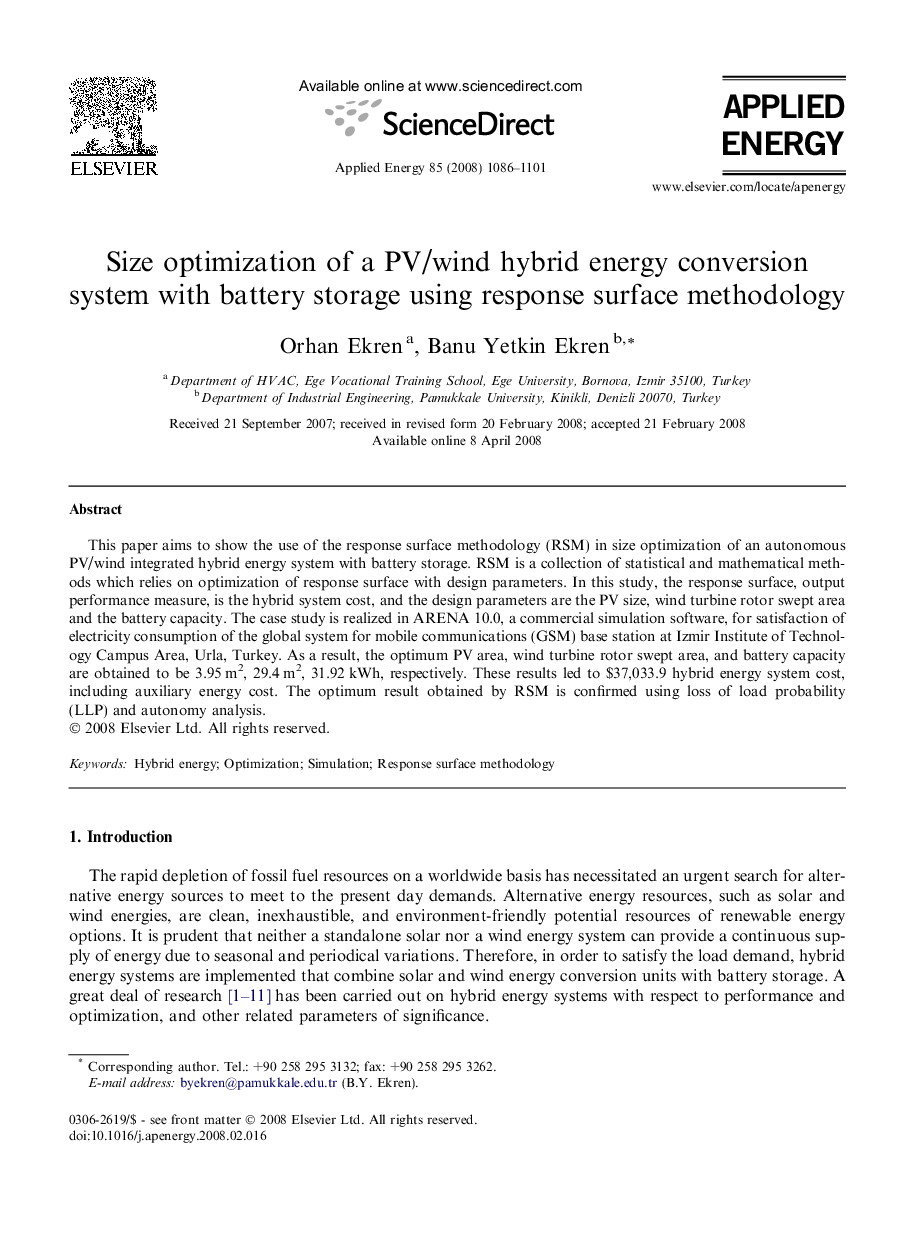| Article ID | Journal | Published Year | Pages | File Type |
|---|---|---|---|---|
| 245219 | Applied Energy | 2008 | 16 Pages |
This paper aims to show the use of the response surface methodology (RSM) in size optimization of an autonomous PV/wind integrated hybrid energy system with battery storage. RSM is a collection of statistical and mathematical methods which relies on optimization of response surface with design parameters. In this study, the response surface, output performance measure, is the hybrid system cost, and the design parameters are the PV size, wind turbine rotor swept area and the battery capacity. The case study is realized in ARENA 10.0, a commercial simulation software, for satisfaction of electricity consumption of the global system for mobile communications (GSM) base station at Izmir Institute of Technology Campus Area, Urla, Turkey. As a result, the optimum PV area, wind turbine rotor swept area, and battery capacity are obtained to be 3.95 m2, 29.4 m2, 31.92 kWh, respectively. These results led to $37,033.9 hybrid energy system cost, including auxiliary energy cost. The optimum result obtained by RSM is confirmed using loss of load probability (LLP) and autonomy analysis.
